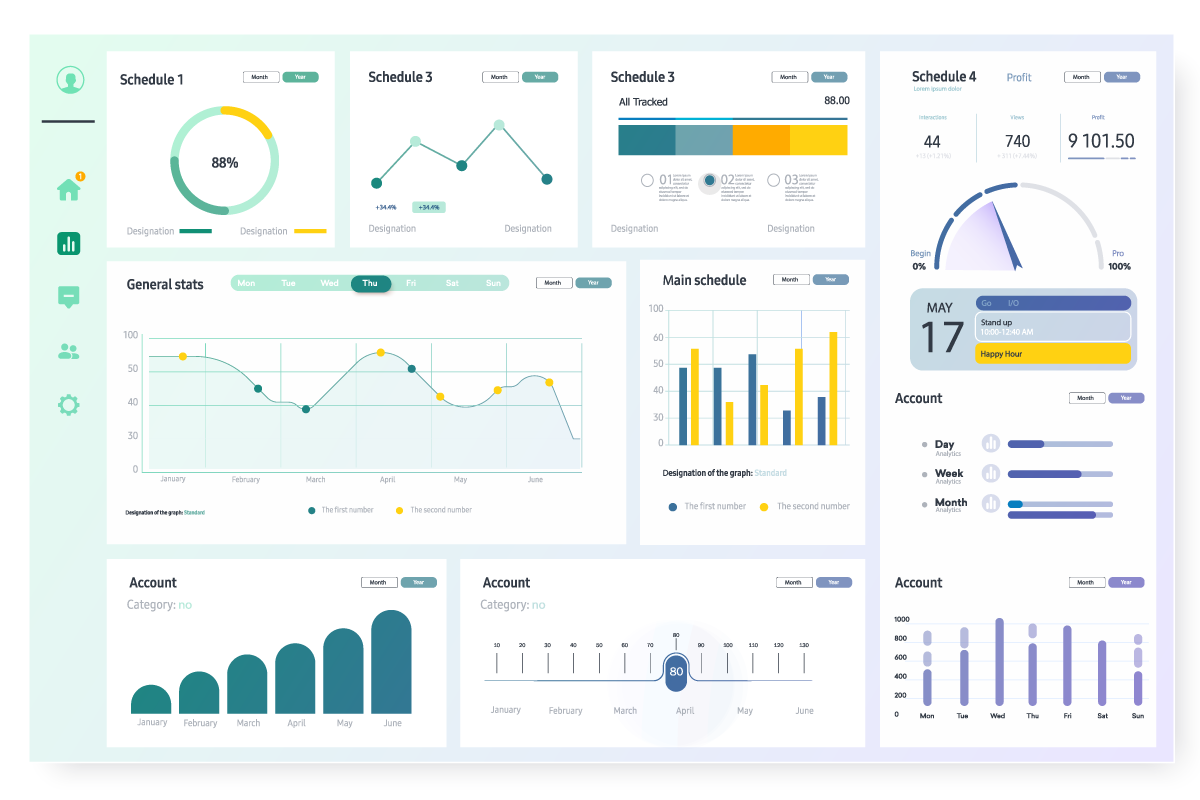Walk into any bank’s strategy meeting today and you’ll hear the same refrain: “We need AI in our analytics.” But here’s what they’re not telling you: most financial institutions are implementing AI/BI tools without understanding the fundamental shift required
in how they think about data.
I’ve spent years helping fintech companies and traditional financial institutions navigate this transformation at Softjourn. The gap between AI hype and actual business impact is real, and it’s costing firms
millions in failed implementations.
The Real Problem Isn’t What You Think
Yes, financial services generate massive amounts of data. But volume isn’t the challenge – it’s fragmentation. Your customer data lives in one system, transaction records in another, risk assessments in a third.
Legacy core banking platforms weren’t built to talk to
modern AI tools, and the regulatory requirements around data handling add another layer of complexity that doesn’t exist in other industries.
I recently talked to a mid-sized fintech that had invested heavily in a predictive analytics platform. Six months in, they were getting insights, but none of them were actionable because the data quality from their legacy systems was fundamentally flawed.
They were making predictions based on incomplete pictures.
This is where most AI implementations fail in financial services: not from bad technology, but from underestimating the infrastructure work required before AI can deliver value.
Where Predictive Analytics Actually Pays Off
Strip away the vendor promises, and AI-powered analytics delivers measurable ROI in three specific areas for financial services:
Fraud Detection and Risk Assessment: Real-time transaction monitoring powered by machine learning can identify suspicious patterns that rule-based systems miss. But here’s the critical part: the models need constant retraining.
Fraudsters adapt, and your AI needs to adapt faster.
Credit Risk and Underwriting: Traditional credit scoring leaves money on the table. AI models that incorporate alternative data sources can expand lending while actually reducing risk. In the fintech industry, we’ve seen lenders
improve approval rates by 15-20% without increasing default rates by using more sophisticated analytics.
Expense Management and Cash Flow Optimization: For corporate banking clients, predictive analytics can forecast spending patterns and flag anomalies before they become problems. One
expense management platform we worked with reduced client operating costs by identifying spending inefficiencies that would have taken human analysts months to uncover.
Notice what these have in common? They’re all focused on specific, measurable outcomes, and not vague promises of “better insights.”

The Three Mistakes I See Repeatedly
Mistake #1: Treating AI as Plug-and-Play
Financial institutions often approach AI tools like they would any other software purchase. But AI requires continuous feeding, training, and refinement. Your data scientists aren’t doing a one-time implementation; they’re signing up for ongoing model management.
Budget accordingly.
Mistake #2: Ignoring Data Quality Until It’s Too Late
Garbage in, garbage out. This old adage is even more critical with AI. I’ve seen banks
spend millions on sophisticated analytics platforms only to discover their source data has inconsistencies, duplicates, and gaps that render the insights unreliable. Data cleansing isn’t glamorous, but it’s a non-negotiable.
Mistake #3: Forgetting Compliance Isn’t Optional
In financial services, you can’t experiment freely like you can in some other industries. Model risk management, algorithmic bias testing, and explainability requirements aren’t just nice-to-haves. Regulators are paying attention to AI implementations, and
the penalties for getting it wrong are
substantial. Your AI strategy needs your compliance team involved from day one, not as an afterthought.

What Smart Implementation Looks Like
The financial institutions succeeding with AI share a common approach: they start small, prove value, then scale.
Pick one well-defined use case where better predictions would have a measurable business impact. Single focus, clear metrics, manageable scope. Once that proves its value, expansion becomes far easier – by that point, you’ve built internal expertise, demonstrated
ROI, and learned what works in your environment.
This phased approach limits downside risk, builds organizational buy-in through demonstrated results, and gives teams time to develop necessary expertise. The institutions that struggle try to do everything at once (multiple use cases, enterprise-wide rollouts,
etc). The ambition rarely survives contact with reality.
The Skills Gap Nobody’s Addressing
Here’s an uncomfortable truth: your existing financial analysts aren’t going to be replaced by AI, but their roles are going to change dramatically. The analysts who thrive will be
those who can bridge the gap between business context and technical capability.
They don’t need to become data scientists, but they do need to understand how to frame business questions in ways that AI can answer, how to interpret model outputs critically, and how to spot when an AI recommendation doesn’t make business sense despite
being statistically sound.
Most financial institutions are investing heavily in the technology but underinvesting in developing their people. That’s backwards. The competitive advantage comes from how well your team can leverage new technologies.

The next wave of
AI in financial services is less about sophisticated models and more about accessibility. Natural language processing tools that let business users query data conversationally, automated reporting that surfaces insights without requiring technical expertise,
and AI assistants that democratize advanced analytics across the organization.
But these advances amplify both the opportunities and the risks. Better tools in the hands of unprepared organizations won’t solve anything. They’ll just help you make mistakes faster.
The financial institutions that will win with AI are those that treat it as a strategic capability requiring thoughtful implementation, not a technology product you can simply purchase and deploy.

